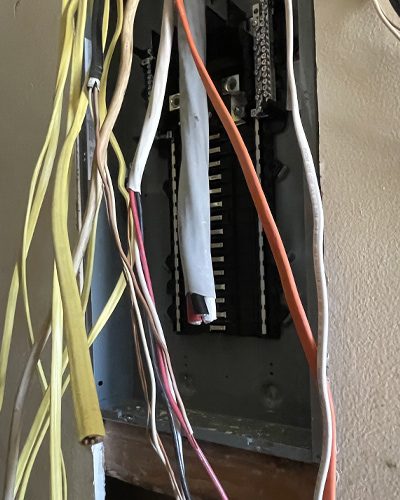What is the electrical wiring color code?
If you’ve ever looked behind a wall outlet you may have noticed there were a variety of electrical wire colors. These wire colors are not chosen at random, and each color indicates what sort of wire you’re looking at according to your local wire color codes.
Whenever you’re doing any sort of home renovation or repairs that involve your house’s power system you need to have an intimate understanding of what the color coding means. If you’re not sure, be safe and let a licensed electrician handle the project for you. Keep reading to find out more about what a wire’s color can tell you about it!
Who determines the electrical wiring color code?
Electrical wiring color codes vary depending on where you are in the world. In the United States the National Electrical Code is the standard that applies. Canada uses the Canadian Electric Code (CEC), while most of Europe and many countries around the world use the IEC, or International Electrotechnical Commission’s standards.
It’s important to note that the NEC is not legally binding, and is instead adopted on a local level – sometimes with amendments.
Unfortunately these standards differ in important ways from each other – with only the ground wire being readily identifiable across all three codes. Be sure to consult a guide appropriate to your region before undertaking any electrical repairs!
What the color of an electrical wire means
We’ll be looking at the NEC wiring code for alternating current, or AC power. While direct current, or DC power, can be found in houses – its applications are currently very specialized. When you look behind an outlet plate or are installing a ceiling fan you are working with AC electrical wiring.
Remember, the NEC standard only applies in the United States, if you are located elsewhere you’ll want to be sure to first identify which code applies and then find the relevant wiring color codes.
Black Wires
In the United States the black wire is a hot or live wire. This wire will travel from your electrical supply to outlets, lighting fixtures, or appliances. While it is important to shut off the power at the electrical panel when doing any DIY electrical work, live wires in particular always carry charge and must be disconnected at the breaker box.
Red Wires
Like black wires, red wires indicated a live wire. While most household power outlets are single phase and run at 120 volts, 240-volt and other high voltage outlets are powered by multiple hot wires and are called two- or three-phase. In these cases you’ll usually see both a red wire and a black wire together.
Remember, each of these wires is hot and you must disconnect them at the circuit breaker before doing any servicing on these lines.
You may also find red wires used to indicate an interconnect between smoke detectors. If you aren’t sure what sort of wires you’re looking at your best bet is to contact a licensed electrician.
Blue and Yellow Wires
At risk of sounding like a broken record, blue and yellow wires are yet another pair of wire colors that indicate a live wire. In three-phase applications blue will be used to represent the third phase.
The most common use for blue and yellow wires is for wiring controlled by a switch.
Yellow wires often connect light switches to light fixtures or ceiling fans. Blue wires are generally found in three- or four-way switches, operating as travelers, or wires which provide multiple pathways for electricity to travel through.
White and Gray Wires
According to NEC standards white wires and gray wires signify a neutral wire. Neutral conductors are responsible for providing a return path for electricity after it has reached its intended point of use. This means that neutral wires can carry an electrical charge and must be treated with care!
White is the most common color for neutral connections, although some electrical systems will still occasionally use gray wires.
Green or Bare Copper Wires
Ground connections are the only wire that doesn’t suffer from having different colors represent it across different global color standards. If you’re looking at an AC wire and see a green wire, green with yellow stripes, or a bare copper wire, it is almost certainly a protective ground wire.
Ground wires provide a safe pathway to the earth, preventing electrical shock or fire. Many houses built before the 1960s do not have grounded outlets and thus do not have ground wires.
Conclusion
In the United States the easiest way to remember what each wire color means is to focus on the neutral and the ground. If you see a white or grey wire you’re looking at a neutral. If you see green, green-yellow, or bare copper wire, then you’re dealing with a protective earth. You should assume that every other color is a live wire and must be treated with caution.
Household electrical systems are complex and potentially dangerous. For big projects your best bet is to let the professionals handle it. Rytec Electric’s team of licensed electricians will make sure your renovations are handled with expert care.


